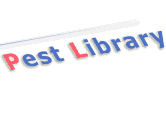
| SATISFACTION GUARANTEED SINCE 1986! | Call us: 1-800-813-4790 or 843-238-9995 |
 |
|
|
About Termites
|
||||||||||||||||||||||||||||||||||||||||||||||||||||||||||||||||||||||||||||||
| Home | Services | Free Inspection | Pest Library | Common Questions | Contact Us | |
| (c) 2002 LANE'S Professional Pest Elimination, Inc. | Designed by DVV Consulting |